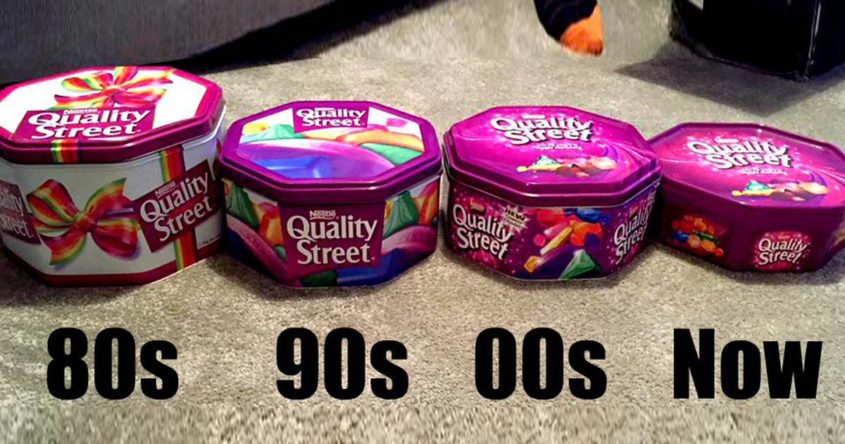Shrinkflation
Woodridgeandscott2022-03-29T09:37:30+01:00Shrinkflation occurs when firms reduce the size or quantity of a good and keep prices the same. Shrinkflation is an alternative to inflation. Rather than increasing prices you get a smaller quantity.


Related concept- Skimpflation
- Skimpflation is a situation where firms – in response to higher costs – reduce the quality of a good/service. Skimpflation means consumers get less for the same price.
Essentially, shrinkflation is a form of hidden inflation. Instead of increasing the price of a product, something that would be immediately evident to consumers, producers reduce the size of the product while maintaining the same price. The absolute price of the product doesn’t go up, but the price per unit of weight or volume has increased. The small reduction in quantity is usually unnoticed by consumers (at least that’s what the manufacturer hopes). Shrinkflation is widely used by producers in the food and beverage industry. It has become a common tactic to help producers deal with their own inflation problems from suppliers. Many companies determined that their customers would balk and perhaps begin to look for substitute products if confronted with yet another price increase. The solution? Shrinkflation. Shrinkflation is not a fraud or misrepresentation of products. Producers always indicate the weight, volume, or quantity of their products Consumer Products. It’s not illegal, it’s just sneaky
Reasons for Shrinkflation?
1. Higher production costs Rising production costs are generally the primary cause of shrinkflation. Increases in the cost of ingredients or raw materials, energy commodities, and labor increase production costs and subsequently diminish producers’ profit margins. Reducing the product’s weight, volume, or quantity while keeping the same retail pricetag can improve the producer’s profit margin. At the same time, the average consumer will not notice a small reduction in quantity. Thus, sales volume will not be affected.
2. Intense market competition Fierce competition in the marketplace may also cause shrinkflation. The food and beverage industry is generally an extremely competitive one, as consumers are able to access a variety of available substitutes. Therefore, producers look for options that will enable them to keep the favor of their customers and maintain their profit margins at the same time.
Final Word
Nowadays, shrinkflation is a common practice among producers. The number of
products that undergo downsizing increase every year. Large producers rely on this strategy to maintain the competitive prices of their products without significantly reducing their profits. At the same time, shrinkflation can frequently lead to customer frustration and deteriorating consumer sentiment regarding the producer’s brand. Eventually, consumers do wise up to what’s going on.


Leave a Reply